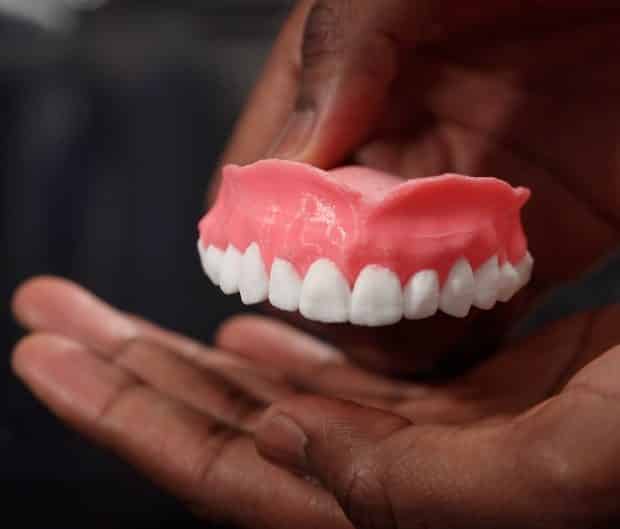Fungus-Fighting 3D-Printed Dental Prostheses Developed
The significant incidence of fungal infections in dental prostheses that has a major impact on quality of oral and overall general health remains to be adequately addressed. Nearly two-thirds of the U.S. denture-wearing population suffer frequent fungal infections that cause inflammation, redness and swelling in the mouth.
Therefore, researchers at the University of Buffalo, have now invented 3-D printed dentures that can fight denture-related fungal infections. To achieve this, the scientists filled the prosthetic devices with microscopic Amphotericin B-releasing capsules.
Amphotericin B is a polyene antifungal antibiotic commonly used in the treatment of denture-related stomatitis. Incorporating the antibiotic in dentures can help deter and treat fungal infections.
“The antifungal application could prove invaluable among those highly susceptible to infection, such as the elderly, hospitalized or disabled patients,” said Praveen Arany, DDS, PhD, the study’s senior author and an assistant professor in the Department of Oral Biology in the UB School of Dental Medicine. “The major impact of this innovative 3-D printing system is its potential impact on saving cost and time.”
The researchers 3D printed the dentures with acrylamide, which is the current go-to material for dentures. The study looked to determine whether the 3D printed
dentures were as strong as conventional ones, and if they could effectively release the medication.To test the dentures’ strength, the researchers used a flexural strength testing machine to bend them and test their breaking point. Conventional lab-fabricated dentures were used as a control. Although the 3D printed dentures’ strength was found to be 35 percent less than the conventional ones, they never broke.
The scientists then tested the ability of the dentures to release Amphotericin B. The teeth were tested with one, five and ten layers of the medication, to see if more could be held within the teeth without impeding its ability to be released. The researchers found that sets of teeth with five and ten layers were impermeable, preventing the medicine from being released, but that Amphotericin B was easily released by dentures with a single porous layer.
Future research aims to reinforce the mechanical strength of 3-D printed dentures with glass fibers and carbon nanotubes, and focus on denture relining. – the readjustment of dentures to maintain proper fit.






























